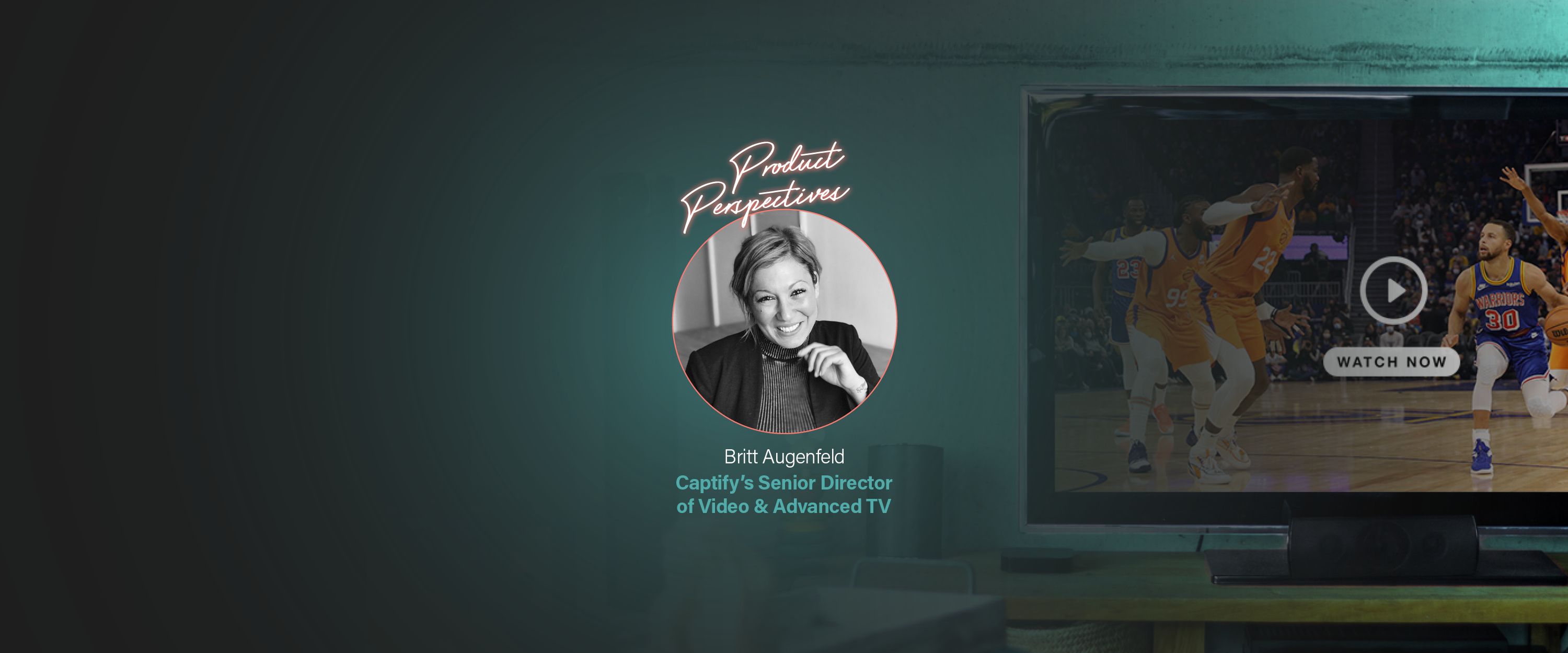Product Perspectives: ‘Recession-proof’ Your Marketing Strategy And Stand Out From The Crowd With Search-powered CTV
Captify’s ‘Product Perspectives’ series features product experts from across the business sharing their thoughts, predictions, and views about key industry trends and challenges. Today, Captify’s Senior Director of Video and Advanced TV, Britt Augenfeld, shares why CTV will emerge as a powerful channel for marketers to connect with consumers during a recession.
The cost of living crisis is affecting millions of people across the world, and as a result, both consumers and marketers alike are looking for ways to tighten their belt and make their budget stretch further.
Historically, marketers pull back on advertising spend when the going gets tough—however, similar situations like the global pandemic and past recessions have demonstrated that this may not always be the best point of call. Research shows that brands who refine and adjust their marketing strategy in response to financial and economic challenges (instead of falling off the face of the earth) have the ability to rise above the competition.
Connect with consumers during tough times to cut through the noise
We looked back at the way consumers have acted and responded, as well as a number of studies conducted on the short and long-term impacts on advertising during times of economic hardship, to help paint a picture of what to expect in the coming months.
Businesses who invest in and back their marketing efforts will reap the benefits. Looking at the 2008 global financial crisis, brands that came back stronger from the recession were those who resisted cutting their marketing spend, and in some cases actually increased it. They did however alter where and on what channels they allocated spend, as well as the messaging itself. This same logic can be applied today.
Forming emotional connections through advertising during hard times is an impactful way to engage and connect with customers, show empathy and reassure them that you’re on their side. This became more evident than ever during the Covid-19 pandemic. We are already seeing businesses use TV advertising to send messages of solidarity in the current climate. For example, UK broadcaster Channel 4, recently collaborated with seven major brands— including Vodafone, sharing tips and insights to help with financial uncertainty. Similarly, during the 2008 recession, McDonald’s used TV advertising to promote their “recession friendly Dollar Menu” – a savvy alternative for money-conscious customers.
The connection between CTV and economic downturn
A common response to a tightened budget is to focus on the channels that typically drive conversion and an immediate return on investment, and turn off the tap on brand awareness marketing. This seems practical in theory, but it has proven to be largely unsuccessful.
TV remains one of the most effective and widely used – but most expensive – brand advertising channels. Meaning, it’s a safer bet to assume that budgets will be relocated to other channels rather than cut significantly. TV buyers will be looking to optimize their media spend to ensure that return on investment is maximized.
This is where Connected TV (CTV) becomes a powerful tool for marketers, as they can put data before demographics to ensure they are reaching relevant, engaged audiences in this most premium of environments.
During a recession, brands simply don’t have money to waste, making CTV the way to go to ensure bang for their buck – something that can’t be guaranteed with linear TV. And with cord-cutting an already long established trend, it is predicted to accelerate as people continue to find ways to reduce expenses during economic uncertainty.
Consumers are opting out of expensive subscriptions like cable and live TV streaming services in favor of their significantly cheaper counterparts, e.g. Hulu, Apple TV, Netflix, Disney+ and Amazon Prime. The month-to-month nature of subscription services is a much more attractive alternative to long term contracts tied to fixed addresses too—people want flexibility in times of uncertainty.
In the US, consumers are preparing for tough times ahead. An online survey shows 62% of respondents are looking at cutting back spending, and 39% are sticking to a tighter budget than before. Over in the UK, a report conducted by SellCell found that 52% of people are planning to reduce the number of times they go out each week to brace themselves for the coming recession.
Spending more time at home means more time consuming media, presenting advertisers with an opportunity to reach more eyeballs, and potential customers.
Where CTV and search data come together to create a ‘recession-proof’ solution
It is well known that CTV provides advertisers with the benefits of TV in terms of brand storytelling—right in people’s living rooms, combined with the powerful data-driven targeting capabilities of digital.
Now, Captify has brought search data to this environment—bringing the most powerful data set in advertising to the most premium, most personalized space of TV. It’s a huge win for marketers and consumers alike.
Our Search Intelligence harnesses the vast world of explicit search that exists across the open web to build in-market audiences for advertisers. Search intent provides greater insight and a more holistic view of a customer’s interests than simply knowing their purchase intent. We can understand how they are searching, what they’re searching for, what’s important to them and where they are searching – rather than just what they want to buy.
We then reveal which moments, interests, intent and profiles have the highest affinity for that particular brand or product, revealing both intuitive and non-intuitive audiences. This means we can target audiences that a brand might have never even realized would have an interest or are in-market for their product, and brands can be sure they are targeting pre-qualified audiences.
We saw this in action during the pandemic, when we opened The Trends Desk, allowing brands to access real-time data around consumer sentiment and search trends that mattered to them. Brands could then swiftly alter messaging and targeting, connecting with consumers quicker than the competition.
This is what makes search-powered CTV so beneficial when it comes to stretching your budget further and getting the best return possible.
Ads served are specific to the household they are being viewed in, capturing the interests, intent, moments and profile of the viewer, rather than broad targeting based on assumptive demographic factors like age and gender, where a huge chunk of spend is likely to be wasted talking to people with no affinity for your brand.
Reallocating linear TV budgets during times of economic uncertainty is a recession-proof way to ensure you’re reaching in-market, pre qualified consumers in the most premium environment, their living room.
If you’re looking to recession proof your TV buy and communicate with consumers where you know it will make a difference, get in touch.



